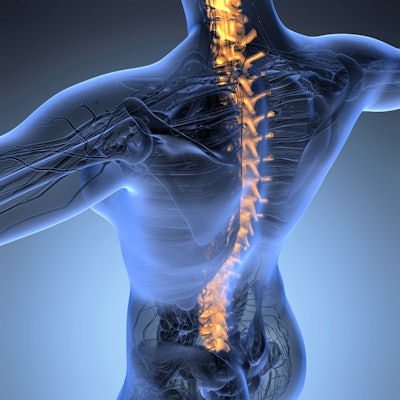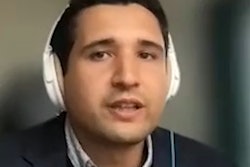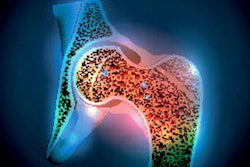
Chest CT for indications such as lung cancer screening can also be used to screen for osteopenia or osteoporosis -- especially when an artificial intelligence (AI) algorithm that identifies regions of interest is added, a study published August 6 in Osteoporosis International suggests.
The results are good news for patients both from the perspectives of both radiation exposure and fracture risk, wrote a team led by Jinrong Yang, PhD, of Huazhong University of Science and Technology in Wuhan, China.
"The routine chest CT with AI is of great value in opportunistic screening for osteopenia or osteoporosis, which can quickly screen the population at high risk of osteoporosis without increasing radiation dose, thus reducing the incidence of osteoporotic fracture," the group noted.
Osteoporosis causes loss of bone mass and density, the authors explained. But it can be difficult to detect, and if it isn't identified in a timely fashion, it can cause serious fractures.
"Osteoporosis is still seriously underestimated at present, and more than 50% of patients with osteoporotic fracture have never received screening for osteoporosis," they wrote. "Therefore, it is imperative to identify individuals at high risk of osteoporosis early and intervene as soon as possible, which can not only avoid fracture and reduce personal pain, but also save medical costs and reduce economic burden."
Current standard for diagnosing osteoporosis is dual-energy x-ray absorptiometry (DEXA). But this technology has its limits, since it is a 2D image, according to Yang's team. That's where CT could come in: It's used for lung cancer screening in a population similar to those who benefit from osteoporosis screening, and it can provide data on the health of a patient's vertebrae with little or no additional cost to the initial exam.
"Opportunistic CT screening systematically leverages the wealth of data embedded in routine CT scans, which are often unrelated to clinical indications, to screen for potential disease or risk factors beyond clinical indications in a single imaging examination," the group wrote.
Yang's and colleagues explored whether chest CT used for lung cancer screening and combined with an artificial intelligence algorithm could also identify osteoporosis. (The algorithm measured bone mineral density using automatic region of interest profiling on CT images.)
The study included 836 individuals who underwent dual-energy x-ray absorptiometry (DEXA) as well as chest CT (and had images of both thoracic and first lumbar vertebrae) between August 2018 and August 2019. The patients were categorized according to DEXA results into three groups: those with healthy bones, those with osteopenia, and those with osteoporosis.
The group found that CT attenuation values of thoracic and first lumbar vertebrae decreased with age, particularly in menopausal women, and showed a high predictive and diagnostic capability for osteopenia and osteoporosis. Those patients with higher CT attenuation values had a lower chance of developing these conditions, with the risk of osteopenia decreasing by 32% to 44% and the risk of osteoporosis decreasing by 61% to 80% with every 10 Hounsfield units increase of CT attenuation values.
The study authors said that the study results don't indicate that CT should replace DEXA for diagnosing osteoporosis, but the group suggests that it could be an effective, additional screening tool.
"Chest CT combined with artificial intelligence automated tools has important implications for opportunistic screening of osteoporosis," Yang et al wrote. "The purpose of opportunistic screening [is] not to demonstrate that low-dose CT can replace DEXA in the diagnosis of osteopenia or osteoporosis, but to investigate the value of CT values as an auxiliary means in screening for [these conditions]."



















